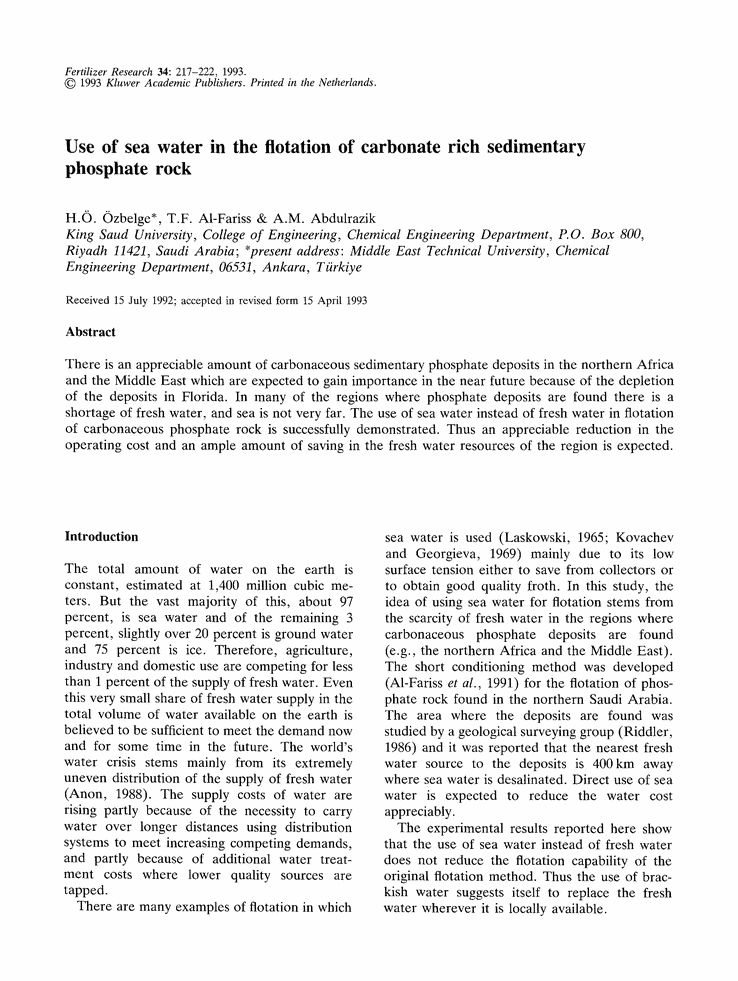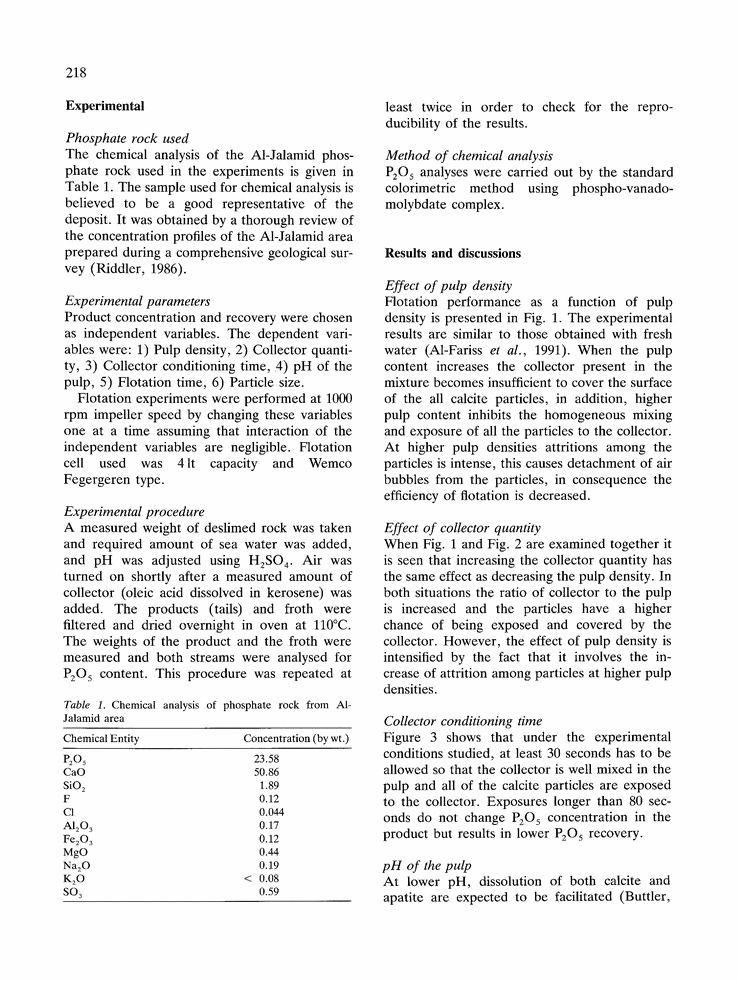- To participate in the 911Metallurgist Forums, be sure to JOIN & LOGIN
- Use Add New Topic to ask a New Question/Discussion about Flotation.
- OR Select a Topic that Interests you.
- Use Add Reply = to Reply/Participate in a Topic/Discussion (most frequent).
Using Add Reply allows you to Attach Images or PDF files and provide a more complete input. - Use Add Comment = to comment on someone else’s Reply in an already active Topic/Discussion.
Phosphate flotation using sea water (3 replies and 6 comments)
I really don't know Sir. Have you seen http://link.springer.com/article/10.1007%2FBF00750567 and https://www.researchgate.net/publication/248084995_Use_of_sea_water_in_the_flotation_of_carbonate_rich_sedimentary_phosphate_rock
Use the Social Share Bar on the Left. Tell everyone you can about https://www.911metallurgist.com/metallurgy/ It's FREE & GOOD.
Yes Cu does run on sea water at Sierra Gorda in Chile. Mo is difficult on sea water. It does need a lot more collector to work. Do you have access to a Laboratory to conduct tests?
More for you
Use the Social Share Bar on the Left. Tell everyone you can about https://www.911metallurgist.com/metallurgy/ It's FREE & GOOD.
Thanks for these interesting papers.
I look for the previous studies in order to plan the experimental tests in the laboratory of Compagnie des phosphates de Gafsa (CPG), Tunisia.
Using sea water can have some drawbacks; first corrosion of equipment would occur unless special materials were used for the flotation vessels and secondly without large reagent additions, your flotation would be buffered at about pH 8.3. If you are using NaOH as a regulator you would first have to precipitate Mg(OH)2 and CaCO3 before achieving any effect and these salts would coat the phosphate giving other problems. What reagents are you using?
There are already some projects of phosphate flotation with saline water in South America. Akzo Nobel has developed flotation collectors to remove silica from phosphate ores using sea water as process water. The utilisation of sea water in mining plants has been increasing in countries like Chile, Bolivia and Peru.
Does this exist for carbonate phosphate. In which type of phosphate the saline water is effective siliceous or carbonate phosphate?The reagents used for flotation are amine and ester. However, the sea water is used Cu-Mo ore and coal in industrial flowsheet. The use of saline or seawater for the beneficiation of phosphate ore is well practiced in Peru and Mexico. The primary gangue that is floated is usually silica and this is commercially achieved using amine collectors on their own. The use of fatty acid collectors normally means an increase in the number of reagents (pH modifier + saponified FA) being used and the conditioning steps (higher solids content than amines) required.
If the gangue mineral is mainly composed of silica(liberated silica) you can do a size by size analysis and see if you can get rid of some part of the silica by classification either in vibrating screen and/or cyclones before flotation. This is generally used in Peruvian phosphate beneficiation plants and salt water is used during classification. You would need desalinated (RO water) for your reagent system and filtration wash water. If there is carbonate minerals involved another carbonate flotation circuit may be required. Alternatively you may reduce the carbonate content of the silica flotation circuit phosphate concentrate by a kiln after filtration and drying.
The gangue mineral is constituted mainly by carbonates (Calcite or dolomite). These need supplementary treatment. This work was done with AkzoNobel's collectors: https://is.gd/pNPOuV https://is.gd/49y4XH
The sea water is also used for carbonate phosphate flotation https://is.gd/vgtY98
In which process the sea water is effective (for carbonate or siliceous phosphate) or useful for the two types.
It is most likely that the phosphate mineral is apatite or fluoro-apatite. Naturally physical adsorption of the selected collector will be required for flotation of phosphate or other minerals (so-called reverse flotation - depending upon the mineral). Water quality is usually critical in these types of separations however the Vale operation in Peru uses seawater, with multiple washing with de-salinated seawater of the phosphate concentrate (lowers chloride levels).



I would develop the treatment of phosphate with saline water.
Please let me know what you think about the use of salted sea water as process water for carbonate and siliceous phosphate beneficiation.